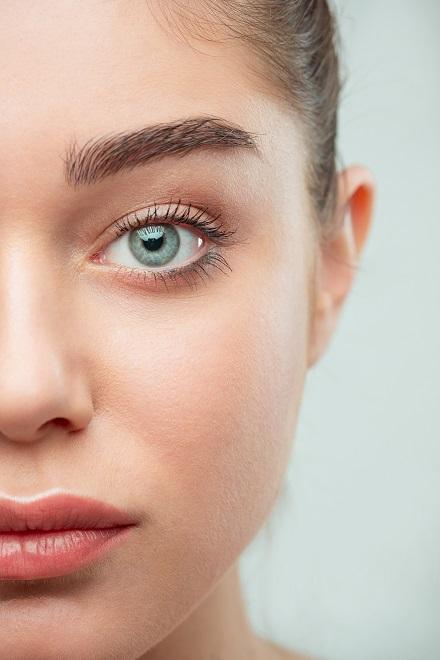The eyes, a focal point of facial expression, signifies health and beauty. With aging, a person notices fine lines, loose skin, excess fat, and dark circles around the eye. These changes are noticed as a combination of thin skin, shifting gravity, loss of collagen, and excess sun exposure, resulting in a sad, tired, or unhealthy appearance that many find troubling.
Although there are several treatment options that successfully address fine wrinkling and contour deficiencies, dark under-eye circles have been resistant to treatment.
Dark circles or Periorbital Hyperpigmentation (POH), is a common condition encountered in dermatology practice. It presents as blue, dark brown or black color discoloration or darkening under or around the eyes. It can affect an individual’s emotional well-being and influence quality of life.
What Causes Dark Circles?
Dark circles are caused due to many factors. The common ones include:
Genetic or Heredity: Many families have noticed the pigmentation around the periorbital area early in childhood which increased with age. Some were mildly affected and some were severely affected.
Peri-Orbital Edema: This can happen by the accumulation of fluid due to allergy as in atopic dermatitis and allergic contact dermatitis. Systemic causes like salt and water retention due to high blood pressure, and medical disorders (e.g. liver, thyroid, kidney) can also lead to this.
Prominent vasculature: Due to thin overlying skin around the eyes and superficial vasculature, there is a violaceous appearance in the inner aspect of the eyelid making the area around the eyes appear darker.
Tear Trough depression: It is an age-related change that casts shadows giving the appearance of dark circles. It happens due to the loss of fat with aging, thinning of overlying skin, and the descent of the cheek area which appears as a depression in the lower eyelid region.
Other causes: This includes post-inflammatory hyperpigmentation secondary to atopic, allergic contact dermatitis, and other dermatological conditions. Periorbital hyperpigmentation can also be caused by rubbing and scratching of skin around the eyes. Others include dermal melanocytosis, acanthosis nigricans, vitamin k deficiency, and pigmentary demarcation lines.
Ultraviolet radiation and some lifestyle factors like lack of sleep, stress, fatigue, excessive alcohol consumption, and smoking are known to increase periorbital pigmentation.

Treatment Options For Dark Circles
- Treatment begins with understanding the primary cause of hyperpigmentation and identifying the contributing factors. Optimal results require a multimodality approach in many patients.
- Lifestyle modifications like adequate sleep, drinking an adequate amount of water, avoiding rubbing of eyes, etc. do help.
- Because excessive pigmentation is so frequently the major cause for dark circles, the first line of treatment and prevention is the use of broad-spectrum sunscreen.
- After sun protection, the next most important tool for treating dark eye circles is a topical bleaching agent, particularly hydroquinone and tretinoin. Kojic acid, arbutin, azelaic acid, and vitamin C are recommended for patients who cannot tolerate hydroquinone.
- Chemical peels like glycolic acid, lactic acid, TCA are recommended in combination with topical bleaching agents.
- Q-switched YAG lasers for pigmentation, Microneedling, Radiofrequency, Fractional Resurfacing lasers are used for fine lines under the eye
- Botox Treatment for fine lines, PRP, and dermal fillers for tear troughs are also recommended.
For the best dark circles removal treatments, Consult FMS Skin & Hair Clinic. Top Best Skin Clinic in Hyderabad for Advanced Skin Care Treatments.
For Appointment Booking. Please call us or WhatsApp at 8885060760 Or Email Us at [email protected]

Author: Dr. Swathi









